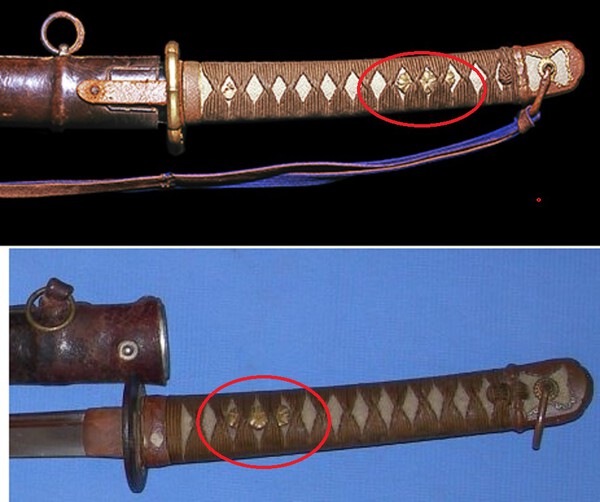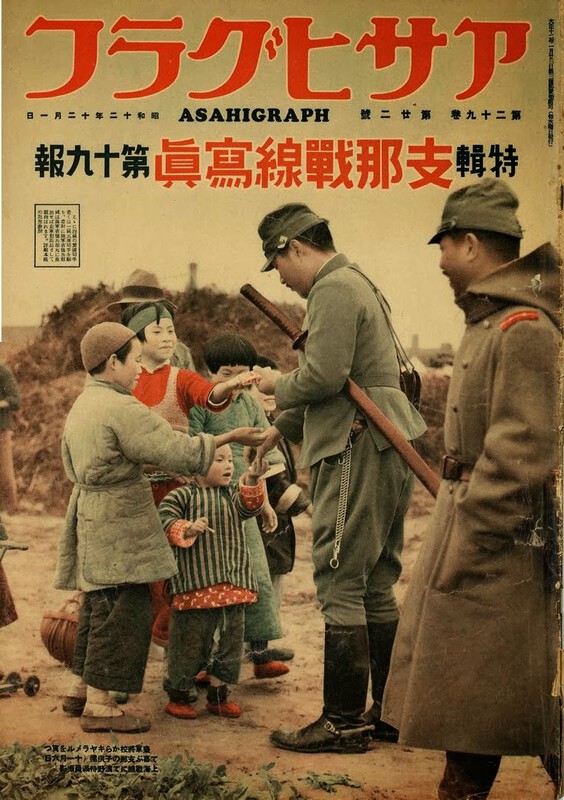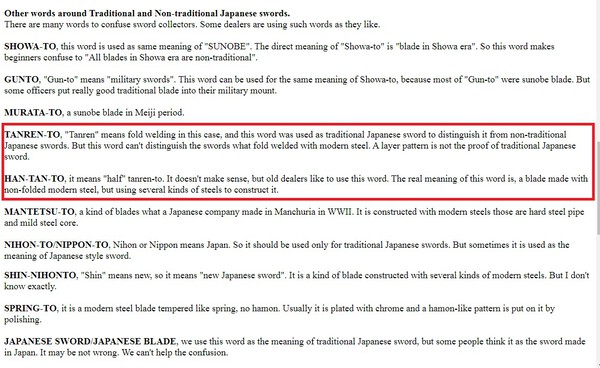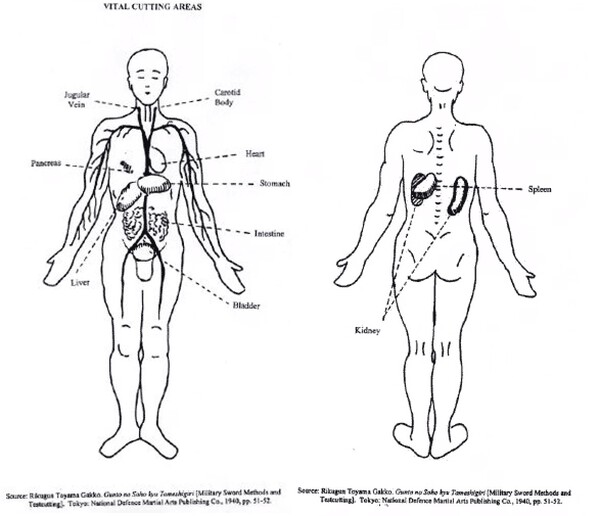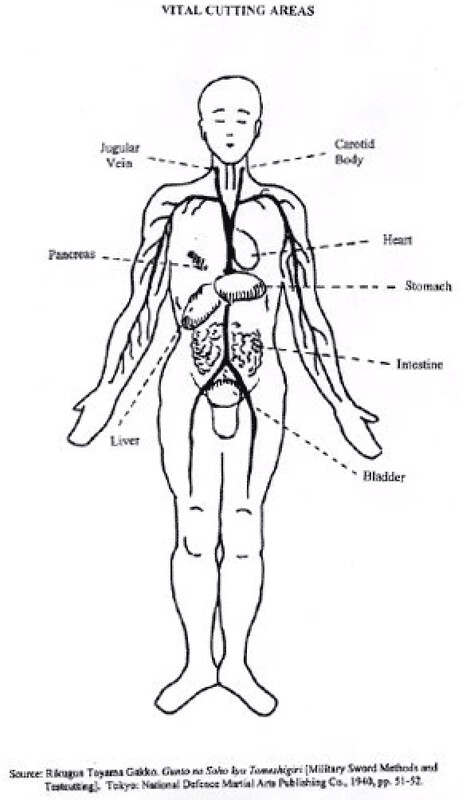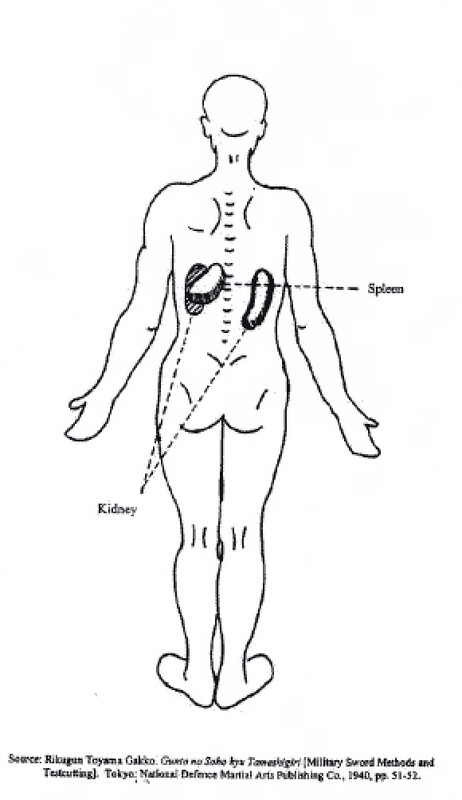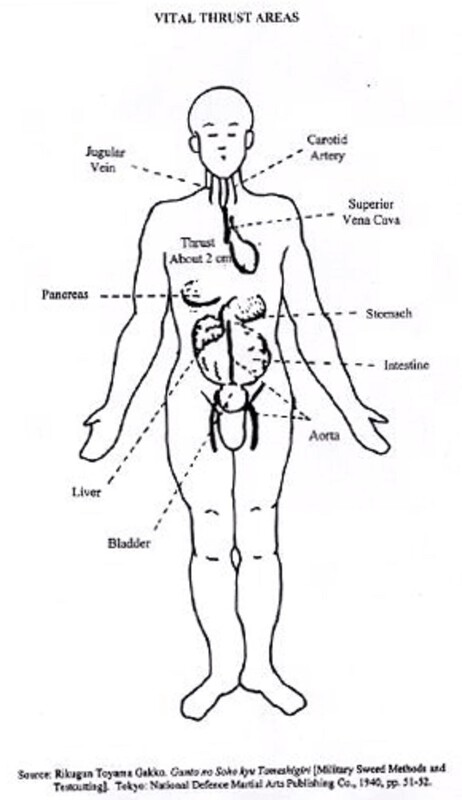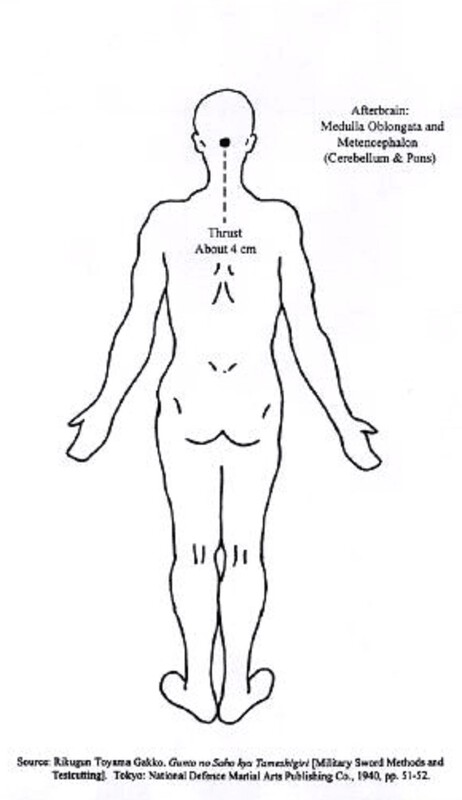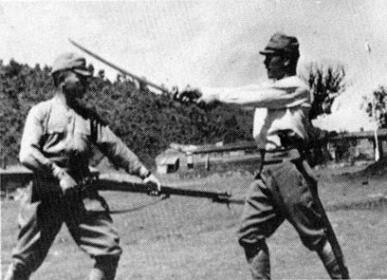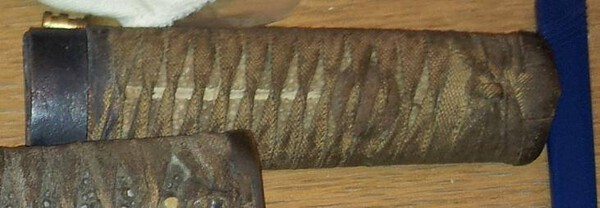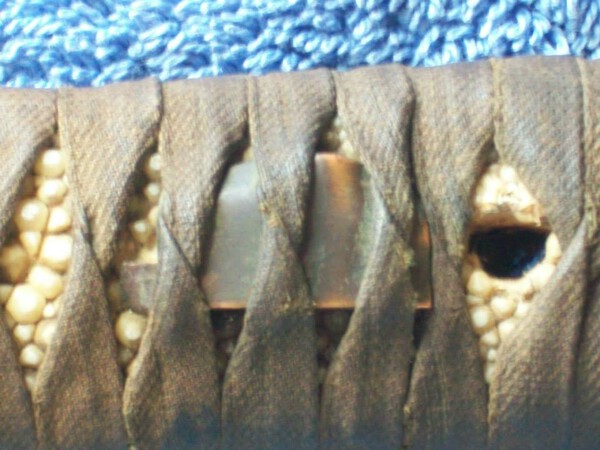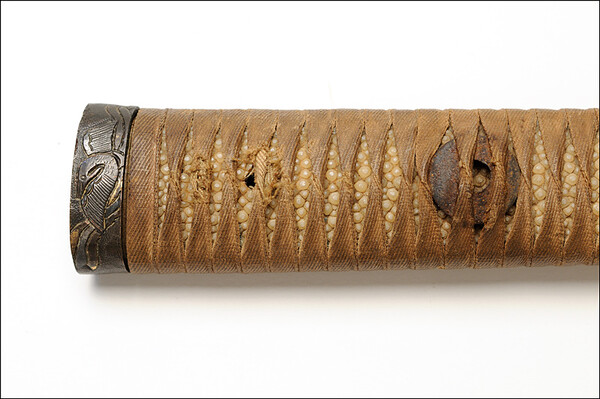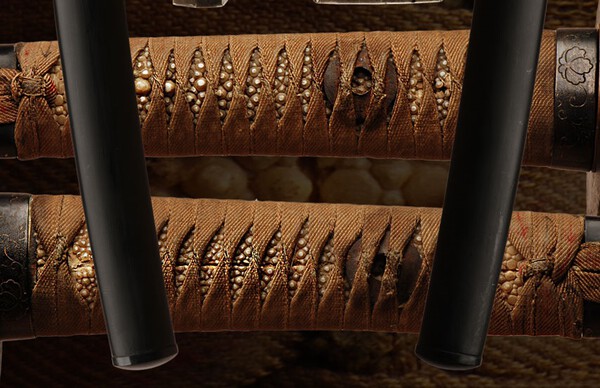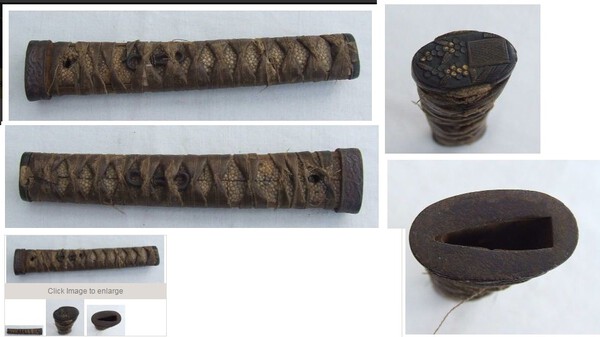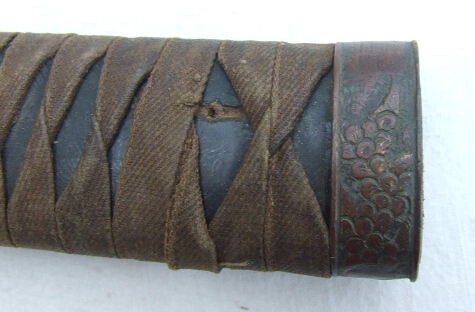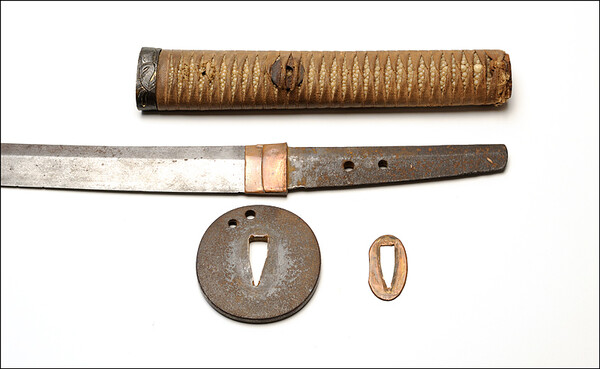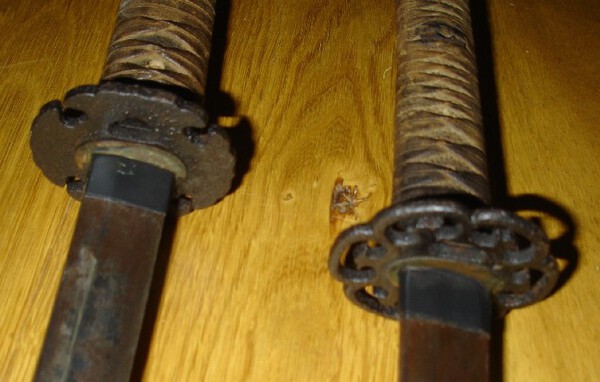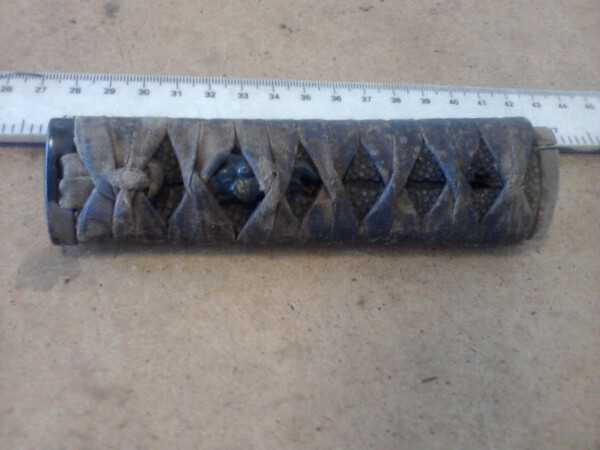-
Posts
1,691 -
Joined
-
Last visited
-
Days Won
11
Content Type
Profiles
Forums
Events
Store
Downloads
Gallery
Everything posted by Dave R
-
Was that for the whole lot?
-
I have shipped a North African sword blade before described as an ethnic "Weaving Baton". I suggest being literal but obscure, eg "bakumatsu gentlemans walking stick" or use the Japanese term "Shikomizue". Don't lie, but don't give too much away. Don't use the word "sword" anywhere in the description.
-
I think numbering would be more important in a large concern with multiple swords on the go at the same time, and less so in a small workshop where they could be sending one complete sword our before starting the next.
-
A quick whip through my files shows that even the IJA ( or at least their suppliers) were in two minds about menuki placement.
-
There are a number of articles on NMB about this very question, it seems to popup quite often. http://www.militaria.co.za/nmb/topic/12085-menuki-for-grip/ And a link to an article here.. http://www.arscives.com/historysteel/japanesekoshirae.article.htm
-
Like I said, the school of swordsmanship is relevant, some have menuki in one orientation, and others in the opposite position. Originaly menuki were decorative "caps" over the mekugi, and in typical fashion retained when changes in mounting meant they no longer had that function. While having a quick peruse of one of my favoutite sites,I found their article on changes of mounts from Tachi to Katana, and a mention of what really defines a left handed mount... the position of the kurigata! http://www.ksky.ne.jp/~sumie99/koshirae.html
-
The question is why? Are you taking your Kyu-gunto into combat?
-
Looks very nice,and more elaborate than most, but not that unusual. Rice glue is not particularly strong, so an unbound tsuka without same would need to be reenforced in this way.
-
This is one of those images I garnered for my own use ages back, and before I started recording sources. As I understand it though, this is an early style wrap, as in Muromachi and earlier, for swords used in war. What you have written is very interesting indeed, and indicates that it could be done to protect the Ito, in the manner of the cotton bandaging seen more often and later
-
It's not about the length, it's about the mounts, and where it is signed. A Tachi is worn edge down, and a Katana edge up. Signatures are supposed to go on the "public" Omote side of the tang. But dont worry about it, at various times a blade would/could have different mounts and a lot of "Tachi" blades were worn in Katana style, Tachi have a special status and role, so this one seems to have been co-opted into a Tachi role for some reason by someone who did not have a Tachi blade. .....
-
Reading this I was reminded of one of the photo's in my files, a Japanese officer with what we would in the past have called a pilot sword. Leather covers and all.
-

What In The Cornbread Hell Is This?
Dave R replied to jt nesbitt's topic in Military Swords of Japan
My guess is early Showa era, one reason being the long tang with just one mekugi ana and little in the way of patina. As for the forging, well they did a lot of original stuff at that time, and I wonder at how skilled the assayers were back in the day, or even if they were happy to judge anything with a hada as legit...... Something of a clue here, where a Japanese site refers to old dealers using the term Han tanren to. Link to Usagiya here...http://www.ksky.ne.jp/~sumie99/sunobe.html A highlighted sreen shot below. -
Menuki position has little to do with handedness,and more to do with sword school and Mei. The rule is that the lower (closer to tsuba) menuki shows on the outside position "omote" when worn.... The same for the Mei. When the sword went from being worn as a tachi to a katana, the mei changed position and the menuki swapped so the lower menuki was still on the omote. Then there are the exceptions, loads and loads of 'em!......
-
Nice to have the end of the story.
-
As I understand it, sword tests can be done at any stage in a swords "life", even some considerable time after they were made. I don't have a linkable reference but I have been told there is at least one old blade that had a test inscription applied during the 1930's, relating to the China campaign.
-
You have no chance of finding the last (Japanese) owner, and frankly on the rare occasion when it has been possible it has not always gone well. Japan has strict laws on swords and treats them as weapons, even antiques need to be judged and licensed, and most Japanese do not like to be reminded about family involvement in WW2. Do not use abrasive paper or abrasive cloth on any part of the sword, give it a wipe down with oil and leave it. If you want to take it further get your hands on some Uchiko powder and rub it down with that. It won't polish the blade, but it should remove loose rust, and you will be doing nothing that had not been done to it in its working life. Have a look for sword care links on this site.
-
You do see Showa era blades in Buke Zukuri mounts, and they are quite often seen with metal kurigata. You also see them then mounted up for use as Shin Gunto, so no real surprises here.... As for the lack of a snap cap, leather strap retainers passing through the kurigata and the hole in the tsuba are not unknown. Not common, but not especialy rare either.
-

Satsuma rebellion swords and Kinnoto
Dave R replied to 16k's topic in General Nihonto Related Discussion
Thank you. -

Satsuma rebellion swords and Kinnoto
Dave R replied to 16k's topic in General Nihonto Related Discussion
Part 3, what were used as menuki.... Usually washers or rovings, but one of these has a folded piece of scrap metal, and the other a twist of wire. Washers/rovings are by far the most common. One has nothing at all. -
That is one very nice sword.
-

Satsuma rebellion swords and Kinnoto
Dave R replied to 16k's topic in General Nihonto Related Discussion
-

Satsuma rebellion swords and Kinnoto
Dave R replied to 16k's topic in General Nihonto Related Discussion
Like I said, inexperience! At the time I did not realise how fugitive linked pictures were. My fault entirely.... -

Satsuma rebellion swords and Kinnoto
Dave R replied to 16k's topic in General Nihonto Related Discussion
Here is the cheap tsuka, but not a "Satsuma" all bits present and correct and a horn kashira but with what looks to be folded folded hemp cloth as Ito. Neatly done, very nice and tight and with proper menuku rather than the weird and random you see on some cheap (Satsuma) koshirae.



